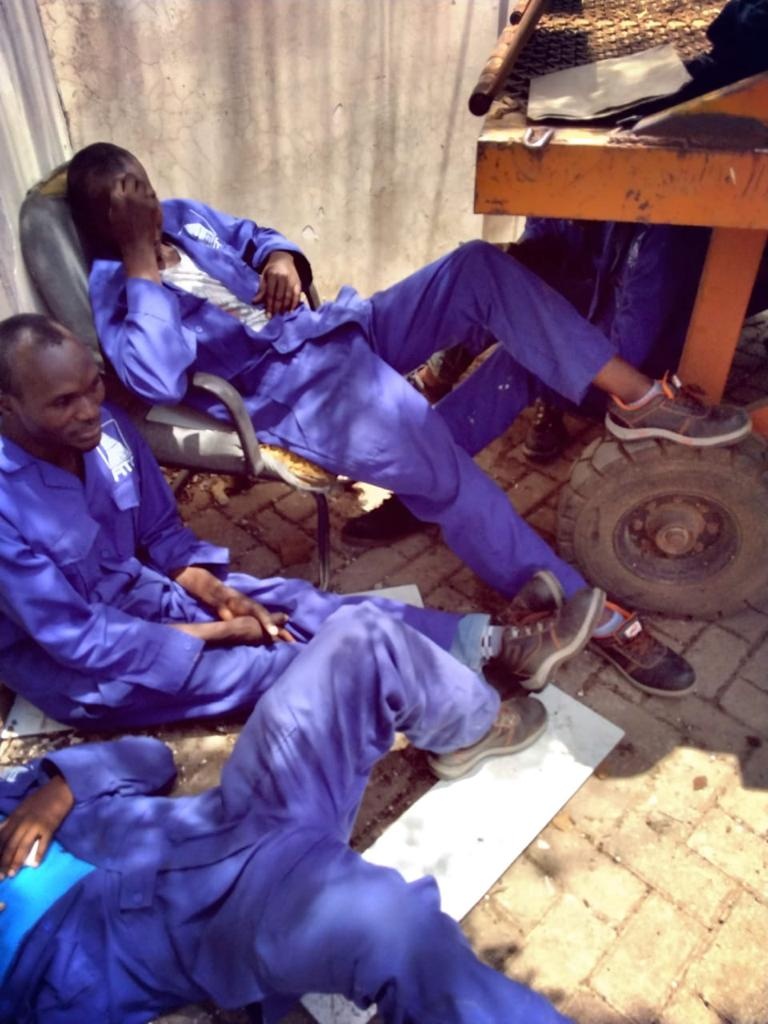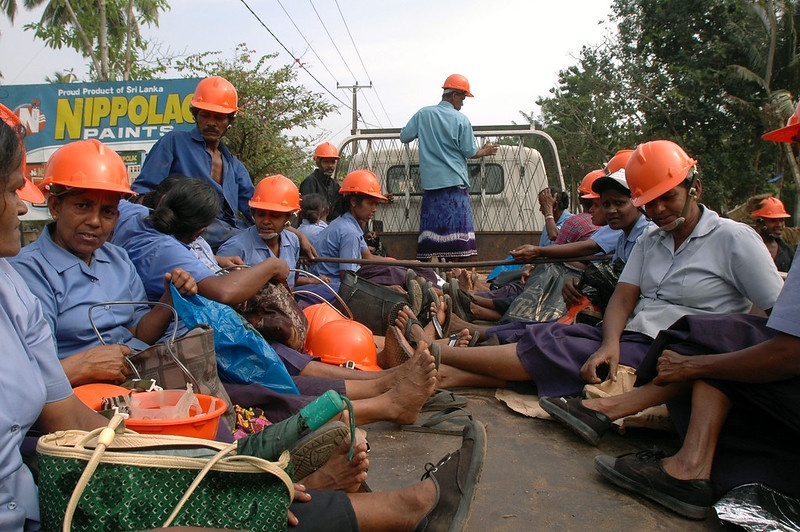Reached by The Tyee, the bully caught on video echoes messages fomented by right-wing politicians. Expect more threats, says an expert.
Charles Rusnell

The Grande Prairie man who verbally attacked and intimidated Deputy Prime Minister Chrystia Freeland on Friday told The Tyee he is proud of his behaviour and isn’t concerned by the public condemnation of those who say he is a deluded conspiracy theorist, a bully and a coward.
“Why did I do that? Because I want the rest of the country to wake up and realize that she is a traitor to the country. She is selling out the country,” Elliot McDavid said in a phone interview Saturday.
A political scientist told The Tyee he expects aggressive attacks on politicians to increase in Canada as right-wing politicians continue to engage in “rage farming” by advancing false and misleading conspiracy narratives.
“They know how to feed those narratives,” said University of Alberta political scientist Jared Wesley.
“It is little half-truths, sometimes more blatant lies, that kind of plant the seeds for this rage farming,” he said.
Freeland, according to her official itinerary, had been in Grande Prairie to meet with local farmers and skilled tradespeople. She was at city hall to meet with Mayor Jackie Clayton.
In a video posted by one of his associates on Friday, McDavid, a big-bearded man dressed in a white sleeveless T-shirt, is seen approaching Freeland as she was about to enter an elevator at Grande Prairie’s city hall.
McDavid calls Freeland’s name, she stops and acknowledges him and he shouts, “What the fuck are you doing in Alberta?”
Freeland and her entourage of women enter the elevator and McDavid continues shouting: “Get the fuck out of this province,” he says, later twice calling her a traitor and a fucking bitch and a c***. Freeland did not respond.
McDavid is then confronted by a man who tells him to leave the building and McDavid gets in the man’s face, telling him not to touch him. Out in the parking lot, McDavid and a woman gleefully celebrate the attack on Freeland.

In the interview with The Tyee, McDavid, one of the organizers of a truck convoy in Grande Prairie, ranted about the Trudeau government being part of a conspiracy involving the World Economic Forum. He also claimed the government was trying to starve the public by forcing fertilizer limitations on farmers and was killing thousands of people, including children, with vaccinations.
“I’m a proud Canadian and I have had enough,” McDavid said, mouthing a trope favoured by conspiracy theorists who view themselves as patriots while viewing the rest of the population as unquestioning sheep.
Asked what he would say to those people who are calling him a thug, and a bully and coward for attacking Freeland, McDavid said, “They got problems. Tell them to go get another vaccine.”
Asked what he would say to those people who say he is too stupid and gullible to realize he has bought into bizarre conspiracy theories, McDavid said:
“I’m fighting for the country and the people, unlike the media, unlike the government,” he said, adding that people won’t wake up until it is too late.
This latest attack on Freeland is part of ongoing verbal harassment and physical intimidation of politicians by protesters, many of whom harbour far-right anti-vaccination conspiracy theories and believe the government is taking away their freedoms.
During the federal election last September, a man threw gravel at Prime Minister Justin Trudeau during a campaign stop in London, Ontario. Trudeau has had to cancel public appearances due to security concerns.
In May, federal NDP Leader Jagmeet Singh was aggressively verbally harassed by protesters in Peterborough, Ontario.
After Friday’s attack, politicians of all stripes, including Alberta Premier Jason Kenney, condemned the harassment of Freeland.
“The verbal harassment and threats directed at Minister @cafreeland during her visit to Alberta yesterday is reprehensible,” Kenney tweeted. “If you disagree with a politician, by all means, exercise your right to protest. But screaming threatening language [and] intimidation cross the line.”
But political scientist Jared Wesley said it is politicians like Kenney, Conservative leadership candidate Pierre Poilievre and UCP leadership candidate Danielle Smith who are actively advancing narratives that serve to encourage this behaviour.
Even before former U.S. president Donald Trump brought his brand of populist politics to the world, he said politicians in Canada were stoking resentment of so-called elites.
“This time around, it’s not just anti-elitism, it’s what we call anti-pluralism,” Wesley said, explaining that United Conservative Party politicians in Alberta in particular advance the narrative that there are “pure people out there, pure Albertans.”
And so when people like Freeland come to their town, they are targets for abuse because they are not viewed as real Albertans or real Canadians, he said. Freeland is from Peace River, Alberta, north of Grande Prairie.

Danielle Smith Isn’t Nuts, Says Kenney. Just Her Policies
All three politicians have, for example, been pushing the narrative that Trudeau is somehow attempting to punish farmers by searching for ways to lower emissions from fertilizer.
Smith in particular, has made numerous statements about how vaccine mandates were an unnecessary intrusion on people’s freedoms and she has threatened to fire the board of Alberta Health Services and the College of Physicians and Surgeons of Alberta.
She has advanced the idea of an Alberta Sovereignty Act that she says would allow Alberta to opt out of federal laws, including those governing guns.
“What these narratives do for conspiracy theorists, is that it helps them make sense of, first of all, complex things that don’t otherwise make sense; it’s boiled down into something really simple,” Wesley said.
“And secondly, it gives [conspiracy theorists] an out of sorts, where it allows them to see other people as being either the source of their problems or as being less moral or less worthy.”

As part of his ongoing political research, Wesley has been conducting focus groups around rural Alberta and he said people just want to be heard, to have their views listened to.

This Is ‘Kenneyism’
Ironically, he said, this extreme behaviour by people like McDavid will make it less likely that politicians will come to hear them out in their communities because they don’t wish to be abused and they legitimately fear for their safety.
When an incident like the attack on Freeland happens, it takes a politician away from the message they were there to deliver.
“So this creates a spiral; a populist spiral where people say they are not listening to us.” Wesley said. “Well, of course, they are not listening to you. Look at what is happening when they try to listen. It is just a self-perpetuating cycle.”

The Dangerous Rewiring of Canadians’ Minds
Wesley said the escalating harassment of politicians is dangerous. He referenced the 2016 murder of Jo Cox, a British labour politician who was shot and stabbed repeatedly by a man who wanted to advance white supremacism and nationalism.
“It is dangerous,” he said. “People are saying, ‘Well [Freeland] should be travelling with security.’ But that is a short-term solution.
“I hate to be a pessimist, but I think it is only going to get worse before it gets better.”
On Saturday, Freeland tweeted she will keep coming back “because Alberta is home, and because I want to keep meeting with Albertans from across this great province and visiting my family and friends here.
“What happened yesterday is wrong. Nobody, anywhere, should have to put up with threats and intimidation,” Freeland said, adding that she met many warm and welcoming people in Alberta and “one unpleasant incident doesn’t change that.”



















